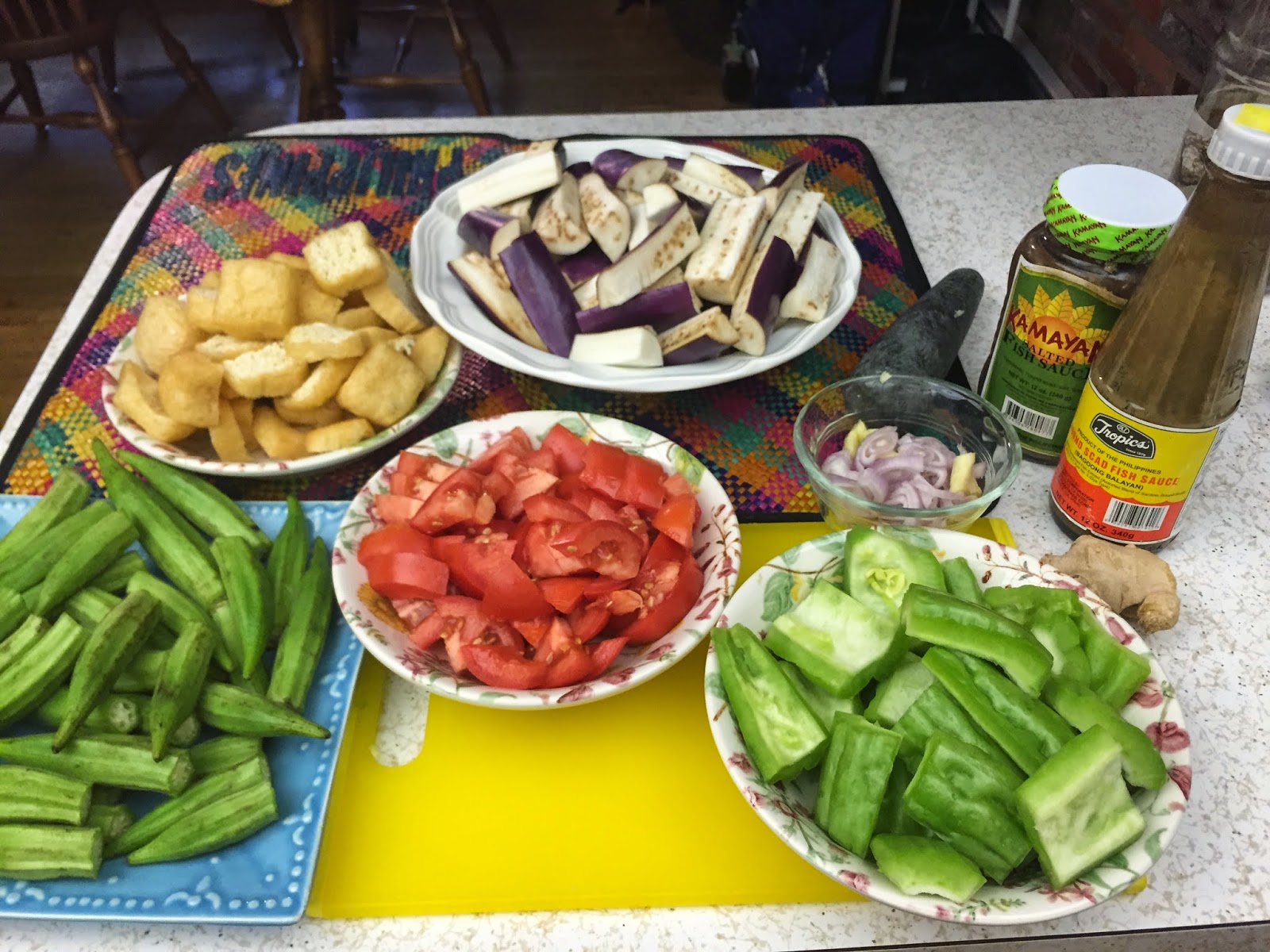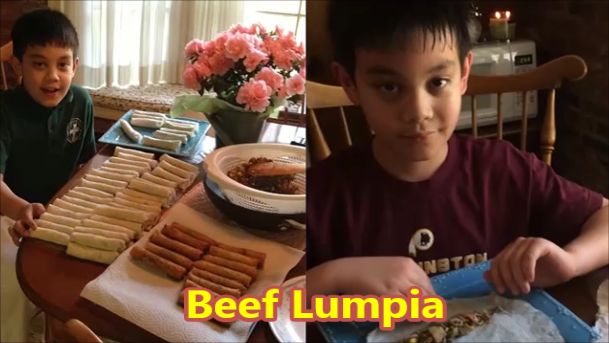But for now, I would like to share with you a real treasure of humanity - an interlinear gloss of my Taiwanese Steamed Fish video, showing the beauty and complexities of one of Taiwan's endangered indigenous languages: Atayal.
 |
| Atayal is spoken in Northern Taiwan, the map above shows the two major dialects, Squliq and C’uli’. |
Although the Atayal language is only spoken in the island of Taiwan, it is NOT related to Chinese in any way. It is an Austronesian language most closely related to the languages of the northern Philippines, like my language! The Ethnologue reports that is is spoken by 84,300 people. These are the ingredients needed to make this dish (in both languages). The ingredients proportions will vary depending on the size of the fish. This is for one pompano fish (but many saltwater white flesh fishes will do). Use white fleshed fish which have a more delicate flavor.
Ingredients Needed
|
|
|
ENGLISH
|
ATAYAL
|
|
1 whole white fish
|
qutux s’rux qulih
|
|
Ginger
|
quriq
|
|
Green onions (scallions)
|
qinuw
|
|
Soy Sauce
|
toyu’
|
|
Rice wine vinegar
|
mngihuy na’ qwow
|
|
Coriander leaves
|
abaw ramat ka blaq sokan
|
|
Chili peppers (optional)
|
qurip muyaw
|
|
Cooking oil
|
suyu’
|
|
The dish is simple, yet delicious. It's extremely easy to make. I'll show you how in this bilingual video dedicated to the Atayal and the original inhabitants of Taiwan.
The video closes with an Atayal proverb:
Maha qutux squliq ga, ini’ qbaq kinraral qani ga, iyat nya’ baqun maha pkusan nanu’ mqyanux la.
"If one doesn’t know history he will not know how to live."
Before I share with your the interlinear gloss of my Atayal video's narration, I would like to give a very special thanks to Maya Yu-Ting Yeh and Hama’ Ihil (Yue-mei Xu) for their wonderful and patient help with their language as well as beautiful Atayal narration. I have new recipes each week, so subscribe now so you don't miss any of my shows!
Before sharing the interlinear gloss for interested linguists, here's the Atayal video narration first in the official orthography. Listen to it with the English subtitles here:
Blaq simu’ kwara’? kun ga, ptayak Rafi. Mqas saku’ balay mwah simu’ sa kamuk mu qani.
Kira’ ga, pcbaqun simu’ maha, son nanu’ pskulu’ qu’ qutux s’rux na’ qulih.
Qani ga, ’llaw balay qu’ thqun na’ ramat.
Kun ka ptayak qani ga, blaq mu pcwakun qu’ qulih na’ umi’. Slaqux nya’ qu’ qulih na’ pitung hya’.
Baqun su cyux maki’ inu’ qu’ ttayal hya’? Si ktai qu’ pintasan ka biru’ qani.
Kwara’ qani ga, nanu yasa qu’ nyux su ggalan sa pcwakan qani.
Nyux su ggalun qani ga, qutux s’rux plquy na’ qulih. Laxi prungi qu’ tunux na’ qulih.
Pinbaq mita’ qu’ qulih qani! Qinu’ na’ giqas balay. Ini’ ksknux.
Pkslyut qmwax qu’ qulih qani. Agal kwara’ qu’ gyus na’ qsahuy nya’.
Te sazing binah nya’ ga, hboci cikay.
Yan qani hmubing qu’ qinuw ru qurip.
Si’ sa ktu’ ru babaw na’ qulih qu’ qinuw ru qurip qani.
Qurip qa ga, spposa’ sa yaqih kinsokan na’ qulih.
Spemaw qu’ toyu’ ru mngihuy na’ qwow lga, nanu stukun sa babaw na’ qulih.
Maha smoya’ su sa melux ga, nanu twangi qurip muyaw uzi’
Shmiq qu’ qsya’, pskulu sa qulih ru, spat puzit lga, yasa la.
Galun qu’ qulih. Syun sa ska’ na’ sara’.
Skluxun qu’ suyu’ ru, stukun sa babaw na’ qulih. tmwang sa kinsokan.
Abaw ramat ka blaq sokan ga, syun sa babaw qulih. Skbetunux ktan.
Maha qutux squliq ga, ini’ qbaq kinraral qani ga, iyat nya’ baqun maha pkusan nanu’ mqyanux la.
Tmasuq la! Wahi maniq la.
Mhway simu’ wahan saku’ mita’.
Babaw nya’ ga, wahi saku’ mita’ sa ChefRafi.com loziy.
Enjoy, Linguists, the ATAYAL INTERLINEAR GLOSS:
blaq=simu’ kwara’? kun ga, ptayak Rafi.
good=2Pl.Nom all 1Sg.Neu Top
cook.ActrNmlz PN
mqas=saku’ balay m-wah=simu’ sa kamuk=mu qani.
happy.AF=1Sg.Nom true
AF-come=2Pl.Nom Loc program=1Sg.Gen this
|
kira’ ga, pcbaq-un=simu’ maha, so-n nanu’ pskulu’ qu’ qutux
later Top
teach-PF=2Pl.Nom Quot say-PF
what steam Nom
one
s’rux na’ qulih.
stand.StatNmlz Gen
fish
|
qani ga, ’llaw balay qu’ thq-un na’ ramat.
this Top
easy true Nom cook-ObjNmlz Gen
dish
|
kun ka p-tayak qani ga, blaq=mu pcwak-un qu’ qulih
1Sg.Neu Lig ActrNmlz-cook this
Top like=1Sg.Gen cook-PF
Nom fish
na’ umi’. s-laqux=nya’ qu’ qulih na’ pitung hya’.
Gen sea
CF-win=3Sg.Gen Nom fish
Gen pond 3Sg.Neu
|
baq-un=su cyux maki’ inu’ qu’ t-tayal hya’? si
know-PF=2Sg.Gen Ext.Rem exist.AF where Nom Red-PN 3Sg.Neu
just
kta-i qu’ p<in>tas-an ka biru’
qani.
see-NAF.Imp Nom
<Perf>tattoo-LocNmlz
Lig book this
(Ext:
Existential marker; Rem: Remote)
|
kwara’ qani
ga, nanu yasa qu’ nyux=su g-gal-an sa
all this
Top what that.way Nom
Prog.Imm=2Sg.Nom Red-take-LF Obl
pcwak-an qani.
cook-LocNmlz this
|
nyux=su g-gal-un qani ga, qutux s’rux plquy Prog.Imm=2Sg.Nom
Red-take-PF this Top
one stand.StatNmlz white
na’ qulih. laxi prung-i qu’ tunux na’ qulih.
Gen fish Neg cut.off-NAF.Neg Nom
head Gen fish
|
pin-baq mita’ qu’ qulih qani! qinu’ na’ giqas balay.
Emp-know(.AF.Imp) see.AF Nom
fish this whether
Lig new true
ini’ k-sknux.
Neg Stat-stink
|
p-k-slyut q<m>wax qu’
qulih qani. agal kwara’ qu’
Cau-Stat-clean(.AF.Imp) <AF>wash Nom fish
this take(.AF.Imp) all
Nom
gyus na’ qsahuy=nya’.
guts
Gen inside=3Sg.Gen
|
te sazing binah=nya’ ga, hboc-i cikay.
Loc two
side=3Sg.Gen Top cut-NAF.Imp a.bit
|
yan qani h<m>ubing qu’ qinuw ru qurip.
alike this
<AF>cut Nom green.onion and
ginger
|
si’ sa ktu’ ru babaw na’ qulih qu’ qinuw ru qurip
put(.NAF.Imp) Loc
belly and above Gen fish
Nom green.onion and ginger
qani.
this
|
qurip qa ga, s<p>p-osa’ sa yaqih k<in>sok-an na’
ginger Dem Top
CF<Red>Cau-go Obl bad
Stat<Perf>smell-LocNmlz Gen
qulih.
fish
|
s-p-emaw qu’ toyu’ ru m-ngihuy na’ qwow lga, nanu stuk-un
CF-Cau-mix Nom
soy.sauce and AF-sour Lig
wine FP:Top what
pour-PF
sa babaw na’ qulih.
Loc above Gen fidh
|
maha
s<m>oya’=su sa melux ga, nanu twang-i
Quot <AF>like=2Sg.Nom
Obl spicy.StatNmlz Top what
increase-NAF.Imp
qurip muyaw uzi’.
ginger red
also
|
s-hmiq qu’ qsya’, pskulu sa qulih
ru, spat puzit lga,
generate-shallow(.AF.Imp) Nom
water steam Loc fish and eight strike FP:Top
yasa la.
that.way FP
|
gal-un qu’ qulih. sy-un sa ska’ na’ sara’.
Take-PF Nom
fish put-PF Loc
middle Gen dish
|
s-klux-un qu’ suyu’ ru, stuk-un sa babaw na’ qulih. t<m>wang
generate-hot-PF Nom
oil and pour-PF
Loc above Gen fish
<AF>increase
sa k<in>sok-an.
Obl
Stat<Perf>smell-LocNmla
|
abaw ramat ka blaq sok-an ga,
sy-un sa babaw qulih.
leaf vegetable
Lig good smell-LF
Top put-PF Loc above
fish
s-k-betunux
kt-an.
CF-Stat-pretty see-LF
|
maha qutux
squliq ga, ini’ q-baq kin-raral
qani ga, iyat=nya’
Quot one
man Top Neg
Stat-know Emp-past this Top
Neg=3Sg.Gen
baq-un maha p-kus-an nanu’ m-qyanux la.
know-PF Quot
Fut-do-LF what AF-live
FP
|
tmasuq la! wah-i maniq la.
finish(.AF.Imp)
FP come-NAF.Imp eat.AF FP
|
mhway=simu’
wah-an=saku’ mita’.
generous=2Pl.Nom come-LF=1Sg.Nom see.AF
|
babaw=nya’ ga, wah-i=saku’ mita’ sa Rafi.com loziy.
above=3Sg.Gen Top
come-NAf.Imp=1Sg.Nom see.AF
Loc PN again
|
Help me continue to work with indigenous people by sharing my channel and wearing one of my shirts!














.png)
.png)










